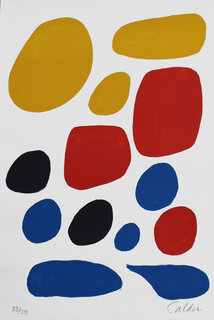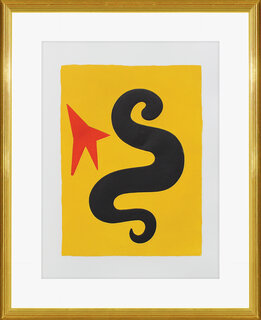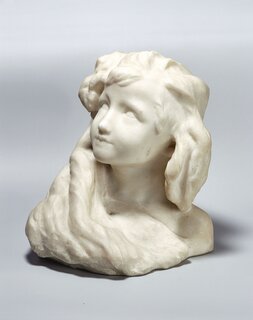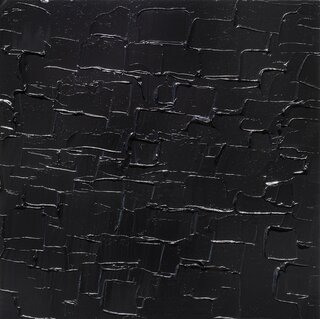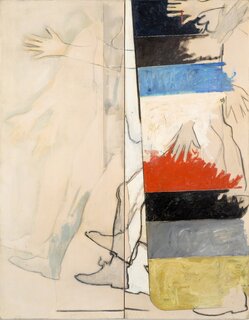
"Through his sculptural works, Alexander Calder strove to capture the vital energies of living beings and the broader cosmos, insisting that his geometries “represent more than what they just are.” Untitled (Red Tulip) (c. 1953) exemplifies the dynamic exuberance of the artist’s signature mobiles, which he began to construct in the early 1930s. In its original French, mobile has a double meaning, denoting both an object that is movable and one that has a motive—an ambiguity that Calder actively engaged. Marcel Duchamp suggested Calder use the term to describe his kinetic sculptures, which Duchamp himself employed to characterize his readymades that incorporated movement.
Calder honed his artistic sensibility in Paris, where he lived from 1926 to 1933; there, he befriended key members of the city’s avant-garde and clarified his aesthetic concerns through his exposure to Neo-Plasticism, Constructivism, and the group of artists around Abstraction-Création. Particularly revelatory for Calder were Joan Miró’s paintings of the 1920s, wherein slender forms float above airy, monochrome grounds, and Pablo Picasso’s wire sculptures, which treat empty space as if it were a positive, plastic substance. Calder’s visit in 1930 to the studio of Piet Mondrian was also formative as he imagined extending the Dutch master’s planar compositions into three-dimensional space, stating: “When I looked at [these] paintings, I felt the urge to make living paintings, shapes in motion.” Soon after, Calder began to cut and shape flat pieces of metal, which he painted in a reduced palette (limited to black, white, and primary colors) and connected with strands of wire. Suspended from the ceiling or placed directly on the floor, these works traded solidity, stasis, and permanence for lightness, contingency, and chance. Composed of black, white, and red hues, Untitled (Red Tulip) is an arresting example of the artist’s ambition to root his abstractions in reality. Calder’s metal-and-wire constructions often allude to organic biomorphic forms and stellar realms from which their titles are frequently drawn. The present work is one in a group of Calder’s mobiles that reference flora; other works among this set are Arc of Petals (1941) and Red Lily Pads (1956) both in the collection of the Solomon R. Guggenheim Museum, New York; The S-Shaped Vine (1946) in the collection of The Broad, Los Angeles; The Red Flower (1946) in a private collection; Cascading Flowers (1949) in the collection of the National Gallery of Art, Washington, DC; and The Tulip (1967) in the collection of the Yale University Art Gallery, New Haven.
Created at the peak of the artist’s career, the present sculpture is further noteworthy for its provenance. Untitled (Red Tulip) was originally acquired circa 1953 by Curt Valentin, an influential and widely respected gallerist who represented leading modern artists, including Alexander Calder, Marino Marini, and Henry Moore. Prominently displayed in his New York apartment, the work would pass into the ownership of Jane Wade, Valentin’s assistant, upon Valentin’s death in 1954. The sculpture was then acquired by the New York gallerist and art collector Jane Kettering Lombard, who made a gift of the work to The New School in New York, where it was installed in the institution’s central building, the University Center, from 2018 until 2021. "

